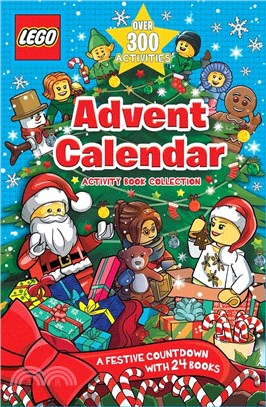An Educological Taxonomy of Intended Learning Outcomes
商品資訊
ISBN13:9798882570315
出版社:Independently published
作者:James E. Christensen
出版日:2024/02/23
裝訂:平裝
規格:22.9cm*15.2cm*1.3cm (高/寬/厚)
商品簡介
相關商品
商品簡介
The field of phenomena which is denoted by the term education is one in which
(1) someone plays the role of teacher and teaches,
(2) someone plays the role of student and studies intentionally under guidance,
(3) some content (some fund of knowledge and/or some range of knowing),
(4) in some setting (physical, social and cultural),
(5) for the purpose that the students learn intentionally under guidance some prescribed range of knowing,
(6) as specified by some intended learning outcome.
An intended learning outcome is a statement which specifies some range of knowing that students are expected and/or required to learn intentionally under guidance from having studied intentionally under guidance some content in some setting.
Knowing is a learned cognitive state of mind which enables us to perform
(1) with intentionality, competence, consistency and justified confidence,
(2) in relation to some state of affairs (some object of knowing),
(3) in relation to some criteria (some set of standards or rules of competence) and
(4) in relation to achievement of some desired outcome.
Knowing always exists as a combination of some kind, level and form of knowing. Forms of knowing are the ways in which we can express our knowing (linguistically, emotionally, imaginally, physiologically, physically). Levels of knowing are distinguished with respect to the degrees of competence. At least four levels of knowing can be distinguished distinguished (novice, intermediate, expert, expert innovator). Kinds of knowing are distinguished with respect to the object of knowing. The object of knowing is the state of affairs (the entities, relations and/ or conditions) in relation to which the knowing is performed. At least four kinds of knowing can be distinguished.
The four kinds of knowing can be arranged into a taxonomy, and the four kinds can be used to make statements of intended learning outcomes. An adequately stated intended learning outcome takes the form
Students are intended to learn intentionally under guidance
(1) a kind of knowing
(2) at a level of knowing
(3) in a form of knowing
(4) about an object of knowing
and the evidence whether, or to what extent, the students have learned the range of know is
(1) some specified linguistic and/or physical performance and/or
(2) some specified product of a linguistic and/or physical perf
(1) someone plays the role of teacher and teaches,
(2) someone plays the role of student and studies intentionally under guidance,
(3) some content (some fund of knowledge and/or some range of knowing),
(4) in some setting (physical, social and cultural),
(5) for the purpose that the students learn intentionally under guidance some prescribed range of knowing,
(6) as specified by some intended learning outcome.
An intended learning outcome is a statement which specifies some range of knowing that students are expected and/or required to learn intentionally under guidance from having studied intentionally under guidance some content in some setting.
Knowing is a learned cognitive state of mind which enables us to perform
(1) with intentionality, competence, consistency and justified confidence,
(2) in relation to some state of affairs (some object of knowing),
(3) in relation to some criteria (some set of standards or rules of competence) and
(4) in relation to achievement of some desired outcome.
Knowing always exists as a combination of some kind, level and form of knowing. Forms of knowing are the ways in which we can express our knowing (linguistically, emotionally, imaginally, physiologically, physically). Levels of knowing are distinguished with respect to the degrees of competence. At least four levels of knowing can be distinguished distinguished (novice, intermediate, expert, expert innovator). Kinds of knowing are distinguished with respect to the object of knowing. The object of knowing is the state of affairs (the entities, relations and/ or conditions) in relation to which the knowing is performed. At least four kinds of knowing can be distinguished.
The four kinds of knowing can be arranged into a taxonomy, and the four kinds can be used to make statements of intended learning outcomes. An adequately stated intended learning outcome takes the form
Students are intended to learn intentionally under guidance
(1) a kind of knowing
(2) at a level of knowing
(3) in a form of knowing
(4) about an object of knowing
and the evidence whether, or to what extent, the students have learned the range of know is
(1) some specified linguistic and/or physical performance and/or
(2) some specified product of a linguistic and/or physical perf
主題書展
更多
主題書展
更多書展今日66折
您曾經瀏覽過的商品
購物須知
外文書商品之書封,為出版社提供之樣本。實際出貨商品,以出版社所提供之現有版本為主。部份書籍,因出版社供應狀況特殊,匯率將依實際狀況做調整。
無庫存之商品,在您完成訂單程序之後,將以空運的方式為你下單調貨。為了縮短等待的時間,建議您將外文書與其他商品分開下單,以獲得最快的取貨速度,平均調貨時間為1~2個月。
為了保護您的權益,「三民網路書店」提供會員七日商品鑑賞期(收到商品為起始日)。
若要辦理退貨,請在商品鑑賞期內寄回,且商品必須是全新狀態與完整包裝(商品、附件、發票、隨貨贈品等)否則恕不接受退貨。
























